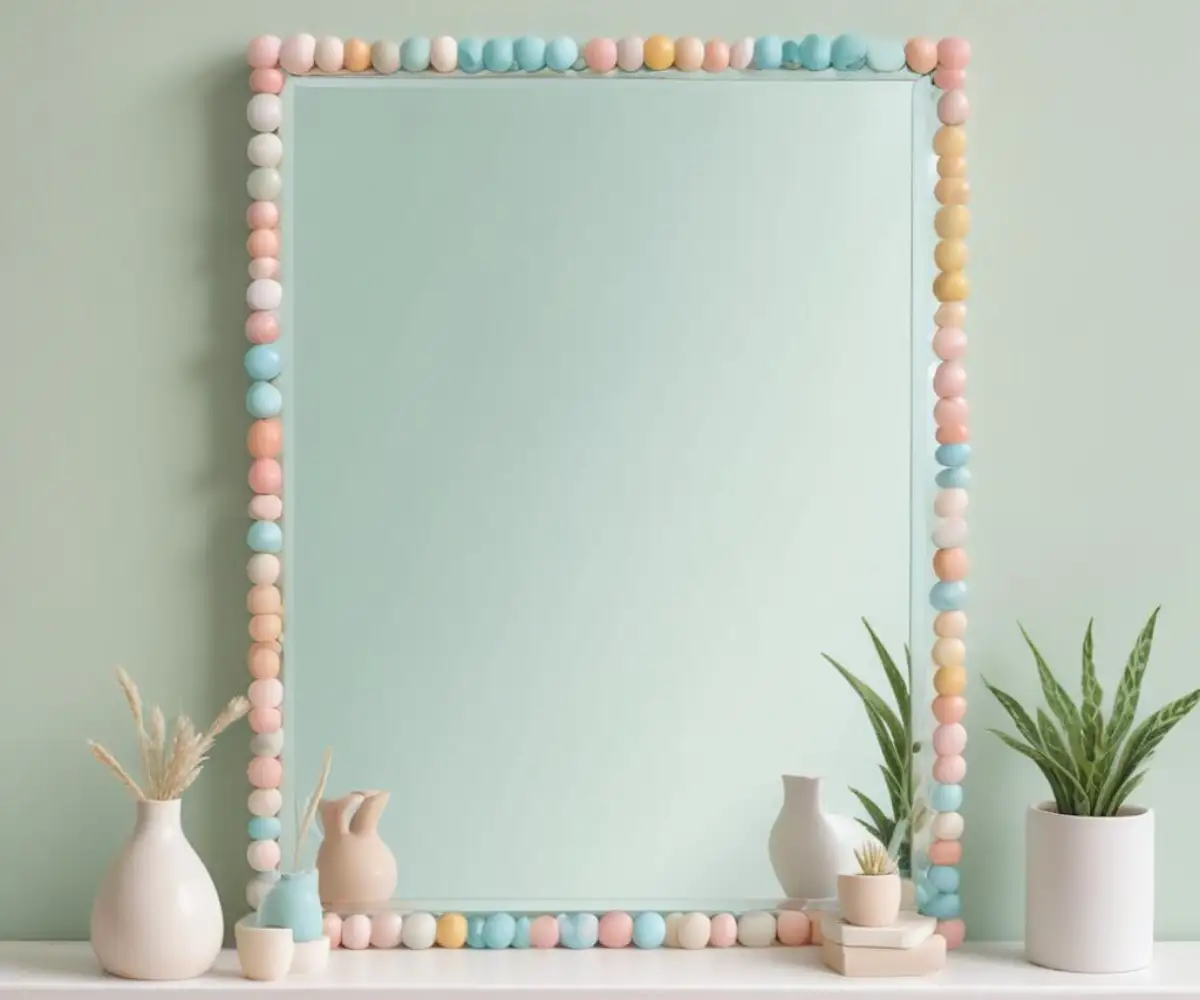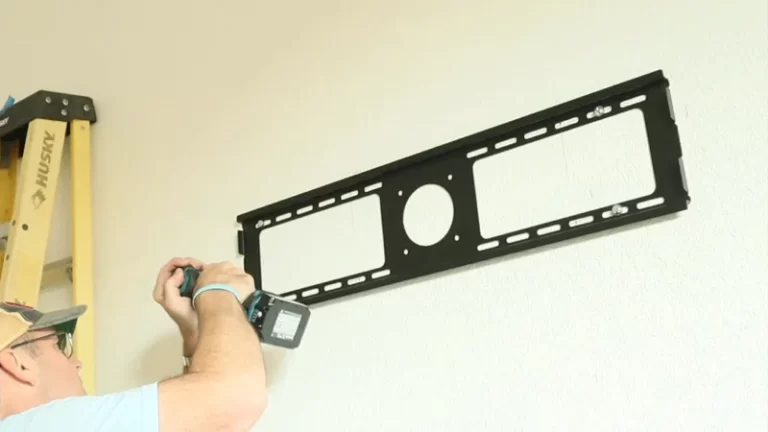Gorilla Glue for Mirrors: The Secret to a Secure Mount
You have a beautiful frameless mirror, and you envision it hanging perfectly on your wall, creating a clean, modern look. The problem is the thought of using mechanical fasteners like clips or drilling into your pristine wall is less than appealing. This leads to a common question in the world of DIY projects: can you use a household name like Gorilla Glue to hang a mirror safely and securely?
The anxiety is understandable. The last thing anyone wants is the crashing sound of a mirror falling, resulting in shattered glass, a damaged wall, and a serious safety hazard. The truth is, while the brand name is strong, not all Gorilla Glue products are created equal, and using the wrong one is a recipe for disaster.
You'll Learn About
Why Your Standard Gorilla Glue is the Wrong Choice
Many people reach for the bottle of Original Gorilla Glue they have in their garage, thinking its legendary strength is perfect for the job. This is a critical mistake. Original Gorilla Glue is a polyurethane-based adhesive that is moisture-activated. As it cures, it expands and foams significantly.
This expansion process can create uneven pressure points on the back of the mirror. This force is often strong enough to distort the reflection or, in worst-case scenarios, crack the glass itself. More importantly, the chemical composition of many standard adhesives can aggressively attack the delicate silver backing of the mirror, causing black spots and degradation over time.
The Right Tool: Gorilla Heavy Duty Construction Adhesive
The solution lies not in abandoning the brand, but in choosing the correct product from their extensive line. Gorilla Heavy Duty Construction Adhesive is formulated specifically for these types of demanding, vertical applications. Unlike its foaming counterpart, this adhesive is a 100% waterproof, gap-filling formula that provides an incredibly strong and durable bond without expanding.
Its non-solvent formulation is designed to be compatible with sensitive surfaces, including the silver backing on most mirrors. This makes it a reliable choice for bonding mirrors to a variety of substrates like drywall, wood, tile, and more. It grabs quickly, which helps in positioning, and cures to a flexible, permanent bond that can withstand the temperature and humidity changes often found in bathrooms.
Step-by-Step Guide: Safely Mounting Your Mirror
Success in mounting a mirror with adhesive hinges almost entirely on meticulous preparation and correct application. Rushing these steps is the fastest way to a failed installation. Follow this guide for a secure and long-lasting result.
Step 1: Flawless Surface Preparation
You cannot over-prepare your surfaces. Any dust, grease, or moisture will compromise the bond. First, thoroughly clean the back of the mirror with isopropyl alcohol and a lint-free cloth. This removes any manufacturing residues or oils.
Next, prepare the wall. The surface must be clean, dry, and structurally sound. For painted drywall, it’s wise to lightly sand the area where the adhesive will be applied and then wipe it clean. This ensures the adhesive bonds to the wall itself, not just a weak layer of paint.
Step 2: Plan and Mark Your Placement
Once your surfaces are clean, use a level and painter’s tape to mark the exact final position of the mirror on the wall. This visual guide is invaluable and eliminates guesswork. Having a friend help with this step to hold the mirror in place while you mark is highly recommended.
Do not skip this step. Trying to level and position a heavy mirror covered in wet adhesive is stressful and often leads to messy, crooked results. Precise markings give you a clear target.
Step 3: Correct Adhesive Application
The way you apply the adhesive is just as important as the adhesive you choose. Do not apply the adhesive in dots or swirls. This can trap air and moisture, which can lead to bond failure or damage to the mirror backing over time.
Instead, apply 1/4-inch beads of Gorilla Heavy Duty Construction Adhesive in long, vertical lines on the back of the mirror. Space these vertical beads every 4 to 6 inches. This vertical application allows for crucial air circulation behind the mirror, preventing moisture buildup and ensuring a complete cure.

Step 4: Mounting and Temporary Support
With the help of a friend, carefully lift the mirror and press it firmly into position against the wall, using your taped markings as a guide. Apply even pressure across the entire surface to ensure the adhesive makes solid contact.
Temporary support is not optional; it is mandatory. The adhesive needs time to cure and build its full strength. Secure the mirror in place using painter’s tape on the corners or by bracing it from below with a piece of wood. For tricky installations, you might consider how learning to handle simple tools like shims can help create the perfect temporary brace.
Step 5: Curing Time is Crucial
Patience is key. Allow the Gorilla Heavy Duty Construction Adhesive to cure for a full 24 hours before removing any tape or temporary supports. During this time, avoid any disturbances or vibrations that could affect the bond. Once cured, you can confidently remove the supports and enjoy your securely mounted mirror.
The Professional’s Secret: The Hybrid Mounting Approach
For very large, heavy, or expensive mirrors, or for ultimate peace of mind, many professionals use a hybrid mounting method. This combines the benefits of both adhesive and mechanical fasteners. The adhesive provides even support across the back of the mirror, preventing flexing and distortion, while clips or a J-channel bear the primary vertical load.
In this method, you would install the bottom support clips or J-channel first. Then, apply the construction adhesive as described above. Set the mirror into the bottom channel and tilt it into place against the wall, finally securing it with the top clips. This combination offers unparalleled security and is the gold standard for heavy mirror installation.
| Gorilla Glue Product | Adhesive Type | Expands During Cure? | Safe for Mirrors? | Best Use Case |
|---|---|---|---|---|
| Original Gorilla Glue | Polyurethane | Yes, significantly | No | Bonding porous materials like wood where expansion is beneficial. |
| Gorilla Heavy Duty Construction Adhesive | Hybrid Polymer | No | Yes | Mounting mirrors, paneling, and other heavy vertical applications. |
| Gorilla Clear Grip | Contact Adhesive | No | No (Can be too harsh) | Bonding non-porous surfaces like plastic and metal for smaller repairs. |
| Gorilla Epoxy | Two-Part Epoxy | No | No (Can damage backing) | High-strength bonding of metal and plastics; not ideal for mirror backing. |
Common Mistakes to Avoid at All Costs
Learning from the mistakes of others can save you a lot of trouble. When mounting a mirror with glue, avoid these common pitfalls that can lead to failure.
Using the Wrong Product
The most frequent error is grabbing the wrong type of Gorilla Glue or any general-purpose adhesive. Using a glue that expands, contains harsh solvents, or isn’t designed for vertical loads is setting yourself up for failure. Always read the label and choose a product specifically recommended for mirrors.
Ignoring Surface Prep
A surprising number of failures are due to inadequate surface preparation. Applying adhesive to a dusty, greasy, or damp surface means the glue is bonding to the contaminant, not the substrate. The bond will only be as strong as that weak layer of dust.
Not Providing Temporary Support
Many adhesives, including construction adhesives, have a strong initial grab but require hours to build up to their full shear strength. Placing a mirror on the wall and walking away is a gamble. The weight of the mirror can cause it to slide down the wall before the adhesive has fully cured.
Overlooking Home Safety Details
A DIY project like mounting a mirror is often part of a larger room update. It’s important to keep overall home safety in mind. For example, if you’re working near light fixtures, being aware of issues like whether it is safe to put a higher wattage bulb in a fixture contributes to a safer home environment. Considering the full scope of your project, from mounting mirrors to electrical safety, is a hallmark of a smart homeowner.
Frequently Asked Questions
How much weight can Gorilla Construction Adhesive hold?
The exact weight capacity depends on the materials being bonded and the surface area of the adhesive application. However, Gorilla Heavy Duty Construction Adhesive is designed for heavy-duty applications, and when applied correctly over a sufficient area, it can easily support the weight of most standard household mirrors.
Can I use Gorilla Glue to reattach a car’s rearview mirror?
No. You should use a specialized rearview mirror adhesive for this task. The bond for a rearview mirror is typically a small metal button to the glass of the windshield, which experiences significant vibrations and temperature extremes. Specific adhesives are formulated to handle this unique and critical application.
How can I remove a mirror that has been glued to the wall?
Removing a mirror mounted with construction adhesive is a difficult process that will almost certainly damage the drywall behind it. It typically involves carefully cutting the adhesive with a long, thin wire or blade slid between the mirror and the wall. This is a slow, careful process, and you should be prepared to repair and repaint the wall afterward.

